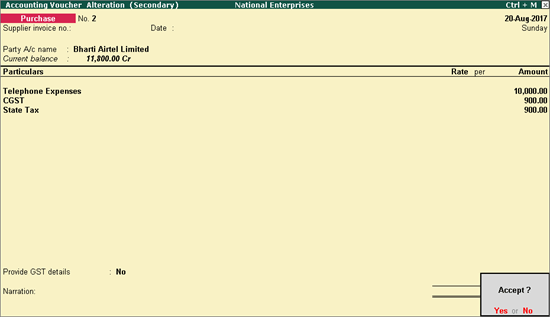


Operating and Appropriated Transfers ( Operating - used to move monies originally deposited in one fund to another fund with legislative authority. Hybrid Journal Entries (contain both expenditure and revenue account codes, may be used to charge/reimburse for costs between governmental and non-governmental funds)Į. Expenditure Transfers (used to adjust or reclassify previously posted expenditure accounting transactions)ĭ. Revenue Transfers (used to adjust or reclassify previously posted revenue accounting transactions)Ĭ. Accounts Payable Journal Vouchers (used to adjust accounting entries within the same fund)ī. See the following sections of this Chapter for further guidance on each type of adjustment:Ī. The type of adjustment that is needed and any system constraints will determine in which module a transaction should be submitted. See Chapter VII, Section 2 – Miscellaneous Receipts / Accounts Receivable Receipts of this Guide for further information on AR adjustments. Most adjustments to payments and deposits should be submitted in either the Accounts Payable (AP) or the General Ledger (GL) modules.Īdjustments needed for Customer IDs, Revenue Contracts and Due To State Receipts must be submitted in the Accounts Receivable (AR) module and must be coordinated with OSC’s Bureau of State Accounting Operations (BSAO). It does not store any personal data.Accounts Payable Journal Vouchers & General Ledger Journal Entries Overview The cookie is set by the GDPR Cookie Consent plugin and is used to store whether or not user has consented to the use of cookies. The cookie is used to store the user consent for the cookies in the category "Performance". This cookie is set by GDPR Cookie Consent plugin. The cookie is used to store the user consent for the cookies in the category "Other.

The cookies is used to store the user consent for the cookies in the category "Necessary". The cookie is set by GDPR cookie consent to record the user consent for the cookies in the category "Functional". The cookie is used to store the user consent for the cookies in the category "Analytics". These cookies ensure basic functionalities and security features of the website, anonymously. Necessary cookies are absolutely essential for the website to function properly. Next, we’ll recognise the deferred tax implications of the fair value gain. Increase in Fair Value (Income Statement) The journal entry to recognise an increase in the fair value of a financial asset, or the decrease in fair value of a financial liability is: DRįinancial Asset/Financial Financial Liability (SOFP) Journal entries Increase in value of asset/decrease in liability That determination is made at initial recognition and is not reassessed.įor the purposes of this illustration, we’ll pretend none of the change in value is due to a change in credit risk.
#Due to due from journal entry full#
The new guidance allows the recognition of the full amount of change in the fair value in profit or loss only if the presentation of changes in the liability’s credit risk in other comprehensive income would create or enlarge an accounting mismatch in the P&L. the remaining amount (presented in P&L).the amount of change in fair value attributable to changes in credit risk of the liability, (presented in OCI) and.IFRS 9 requires changes in fair value on financial liabilities designated as at FVTPL to be split into:


 0 kommentar(er)
0 kommentar(er)
